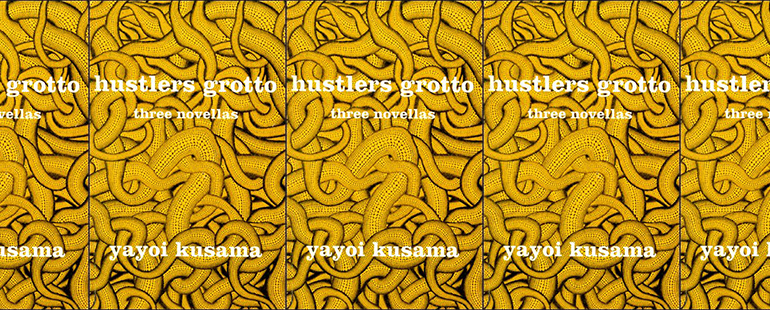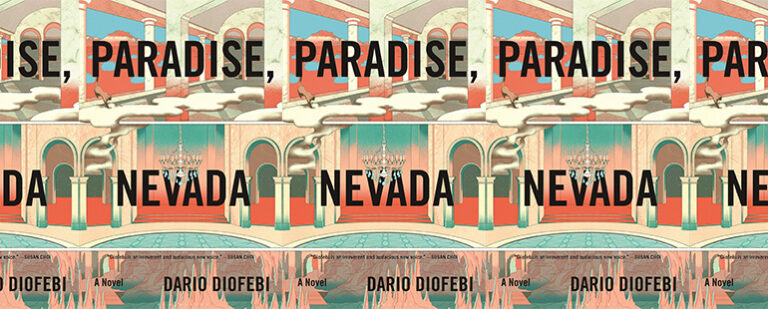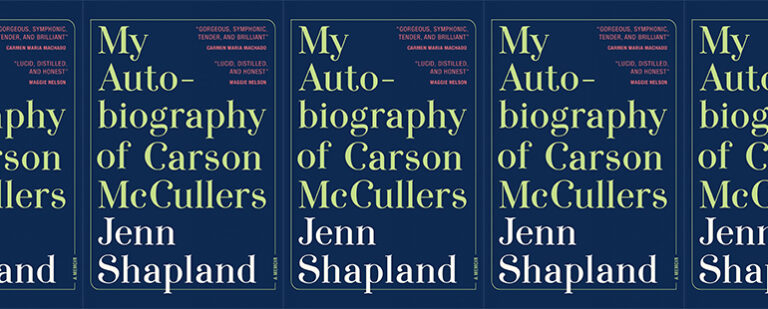The Artist as Writer

Still astoundingly productive at the age of 91, the Japanese artist Kusama Yayoi has in recent years designed a giant balloon for the Macy’s Thanksgiving Day parade, collaborated with Louis Vuitton on a line of clothing, and built an eponymous museum in Tokyo dedicated to her own artistic legacy. At this stage, her relationship to her fans can look more like that of a pop singer than a painter: visitors to her 2019 show at the David Zwirner Gallery in New York waited for hours to get thirty seconds inside her latest Infinity Room, one of a series of mirrored installations, dating to 1965, that has proven to be Instagram catnip. The vibe was zany, celebratory; as homage, some wore Kusama’s signature outfit of a glossy red wig and matching polka dot dress. A mentally ill outsider artist was now the consummate insider.
Kusama’s lifelong struggle with mental illness has been at the center of her art since the beginning. In her 2003 memoir, Infinity Net: The Autobiography of Yayoi Kusama, she describes her gigantic minimalist abstractions of the late ’50s and early ’60s as rooted in hallucinations she experienced as a child when a net-like pattern would stretch over her field of vision, threatening her with “obliteration,” or “depersonalization,” the feeling that she did not have a body and was no longer real. The paintings, with their hypnotic patterning, embody the all-consuming terror of that experience, but the act of painting them, in punishing marathon sessions that took her to the point of physical breakdown, actually helped ward off further attacks, and the critical attention she received for them gave her a sense of value and purpose in the world. That contradiction is crucial to understanding Kusama’s sense of herself and the meaning of her work, which can otherwise seem to take inexplicable twists and turns: in the early pages of Infinity Net, obliteration is a danger to be fought at all costs, but by the time we reach her performance and video work of the ’60s, it has been redefined as a liberation to be sought and embraced, and she is painting herself with polka-dot patterns that mimic the paintings. The reason for this change is never articulated, and the contradiction resonates in interesting and disturbing ways. Is obliteration terrifying or empowering? A form of mental illness or a natural process essential to the workings of the universe? Over the course of her career, Kusama seems to experience it as sometimes one, sometimes the other, and sometimes both at the same time.
After several suicide attempts, she left New York in 1973 and returned to Japan, eventually checking herself into a psychiatric hospital in Tokyo, where she began experimenting with poetry and fiction. She finished her first novel in just three weeks, the beginning of a flood of books that continued until her career as a visual artist began to take off again in the early 2000s, first in Japan and then internationally. Of the fiction produced during this period, only Hustlers Grotto: Three Novellas is available in English, published in translation by Ralph C. McCarthy in 1998. In it, we see Kusama trying to use narrative to capture the complex set of feelings clustered around the idea of obliteration.
Fans of Kusama’s more recent work, including the ethereal and ecstatic Infinity Rooms, may be surprised by what they find, especially in the title story of the collection, “The Hustlers Grotto of Christopher Street,” with its harsh depiction of male prostitution and drugs. But there is a context: Kusama has always been interested in the abjection of the body. It helps to know of the phallic sculptures she was making in the 1960s, work she has described in Infinity Net as arising from a deep-seated anxiety about sexuality and the body:
My fear was of the hide-in-the-closet-trembling variety. And it was precisely because of this that I made tons and tons of these shapes. Creating them, putting myself right in the midst of the horror, helped me to heal the wounds in my heart and, little by little, escape the fear. Each day I would produce forms that scared me, piling them up by the thousands and tens of thousands.
Also relevant are the performance pieces from that period, in which naked actors simulated polyamorous orgies while the artist painted polka dots on their bare flesh, “obliterating” them. Kusama’s intention seems to have been to recast erotic experience as a form of communal sacrament, but video and photographic documentation make the performances look as anxious and fraught as the phallic sculptures.
“The Hustlers Grotto of Christopher Street” is set in what looks to be the New York of the early 1970s, right before Kusama left for Japan. It centers on Henry, a college student who has become addicted to heroin and now supports himself through prostitution—an occupation he despises not because it is sex for hire but because he is actually straight. His pimp and sometime lover is a woman from Hong Kong named Yanni (by her physical description, something of an imaginative stand-in for Kusama) who studied philosophy at Columbia and sees running a brothel as a way to wreak revenge on men, having been abused by her father when she was a girl. Because Henry is out of both money and drugs, Yanni brokers a highly remunerative week of work for him at the country home of a wealthy real estate developer by the name of Robert Greenberg. But on the first night, Henry goes mad and cuts off Greenberg’s phallus. He then seeks refuge with Yanni, and the two flee through a surreally transformed cityscape (“Astonished, the two of them press their hands to the ground and confirm their suspicions: the earth has ceased to turn”), finally climbing to the top of the Empire State Building, where Henry jumps to his death.
The story does not read quite as crudely as it summarizes. The idea of Yanni taking revenge on an entire gender clearly gestures toward the Marquis de Sade, and also echoes the wonderful turn-of-the-century Japanese gothic novelist Izumi Kyôka, who feels like a stylistic influence in the more floridly descriptive passages as well as in the general atmosphere of evil fairy tale. Henry and Yanni’s flight through the city is also obviously an ironic update of the michiyuki or love-suicide sequence in traditional Japanese theater, which celebrates erotic obsession as a form of self-assertion against societal constraints worth dying for. But Kusama moves too fast through her breakneck plot to stop and fully explore those cultural resonances. Henry and Yanni never even talk to each other during their final flight through the city, and we are given little access to their thoughts and feelings. What we get instead is a symbolic vocabulary directly translated from Kusama’s work as a visual artist: phalli that multiply until they fill the entire world; a heavy white curtain that cuts the individual off from other people; and suicide or self-obliteration as part of a mysterious natural process inherent in the universe itself—something imposed from outside. She seems to be trying to reproduce in language the highly charged psychological dynamic she has been modeling in her artwork since the beginning of her career. Here is Henry going mad while in bed with Greenberg:
In the midst of his hallucination, Henry discovers a whirling, windblown panorama. He pursues this dazzling vision, his flesh panting with lunacy and shuddering with need for the drug that is its daily bread. His physiology tugs relentlessly at his senses, demanding the destruction of everything visible. There, on a bitter hilltop the light brown color of diacetyl morphine, poppies bloom as far as the eye can see. Henry makes a mad dash for those preternatural Turkish fields, straddling the horse that gallops through his veins and riding riotously through the flowers.
Modern Japanese literature, because of its early ties to France, is far more comfortable with the surrealist tradition than is its Anglo-American counterpart. In the politics of modern Japanese culture, surrealism stands for the right to not make “sense,” and thus for the value of the individual over the state and society. But Kusama’s use of it feels off in “Christopher Street.” The imagery is so elaborate, and so divorced from what we know about Henry and his life, that it ends up appearing imposed rather than organic. The unintended result is that Kusama can seem uninterested in Henry beyond the ritual of his “obliteration.” Perhaps that shouldn’t be surprising: somebody who has trouble believing in her own reality will probably have difficulty conceptualizing the reality of others, even in simplified form on the page. There is little exploration of thought, feeling, or memory—all the ways that characters reveal themselves as people with intimate histories and interior lives beyond the requirements of plot. This throws off the emotional dynamics in the fiction, leaving the reader outside the action, looking in.
Reading from outside is the opposite of reading sympathetically, of course: the breathless rush of Kusama’s plot starts to play as camp, and Henry’s world of drug addicts and prostitutes begins to look touristic and second-hand. In particular, the retrograde treatment of race and sexuality becomes distracting. Henry is always described in relation to the kinkiness of his afro or the blackness of his skin, his client list is a string of stereotypically Jewish names (because his clients are supposed to be rich? One can only guess), and gay men are portrayed as priapic and grotesque. The reader senses that Kusama’s focus is on her theme of bodily abjection and that her intention is to use her characters to explore her own discomfort with physical need and erotic desire. But her dependence on stereotype ends up confusing the effort.
A lot of great artists have tried their hands at fiction—Giorgio de Chirico, Salvador Dalí, and Francis Picabia, to name just a few (always a contrarian, Pablo Picasso wrote poetry). But having published more than a dozen books over a span of twenty-five years, Kusama is unusual in the seriousness of her engagement with the form. Given her importance to the history of contemporary art, it would make sense for more of her writing to be made available in translation. Until then, readers interested in this side of the artist will have to make do with “Christopher Street” and the two other stories included in Hustler’s Grotto. “Death Smell Acacia” is a twisted take on Pygmalion in which an artist has sex with the rotting corpse of his wife. “The Foxgloves of Central Park” is a relatively naturalistic tale about a mentally ill woman’s life in a psychiatric hospital, and her ambivalent romance with another patient. Both offer interesting glimpses into Kusama’s thinking—particularly “Foxgloves,” which feels more emotionally vulnerable and open than the other two pieces in the volume. Ultimately, however, Kusama’s fiction leads us back to her artwork, with its mysterious openness, its strange energy, and its uncanny ability to speak without words. She is at her most powerful in that silence.
This piece was originally published on June 15, 2020.


